Miniature in size but big in charm, the bantam chicken breeds are a great addition to any homestead or farmstead.
Whether you want eye-catching ornamental birds or compact egg layers, bantams are for you. Also, they make friendly backyard pets.
Here is a list of cool bantams I have curated based on my own experience of raising and some research.
1. Silkie Bantam
The beloved silkies are known for their downy plumage and affectionate behavior, which have won countless keepers’ hearts.
You won’t be able to skip their overloaded cuteness in miniature forms.
They make great chickens for small yards, requiring little space. Also, cuties will entertain your puppy when they are around, asking for attention.

These true bantams also enjoy being cuddled. They mature between 24 and 30 Weeks and live for 7-9 years.
You can raise silkie bantam well in a cold environment.
Appearance: Fluffy feathers, haired plumage, black skin, feathered legs
Varieties: Black, white, blue, splash, partridge, lavender, buff, and grey
Temperament: Friendly, cuddly, docile, cold-hardy
Egg Production: Moderate; cream or tinted eggs (80-120 eggs per year)
Ideal for: Cute farm pets, broody hens, show purposes
2. Sebright Bantam
Chicken enthusiasts always get lured by a unique laced pattern of Sebrights. It is as if someone has marked the feathers with a fountain pen.
They are typically in a bird’s size and can fly. This ability allows them to roost in the tree if they are taken to free range and there are trees around.

Many prefer raising these birds in confinement to avoid difficult catching.
Their lifespan ranges from 8 to 12 years.
Appearance: Laced feathers, unique feather pattern, slender bird, small and elegant
Varieties: Black, silver, gold, and buff laced
Temperament: Active, confident, sociable
Egg Production: Light; white eggs (60-80 per year)
Ideal for: Ornamental purposes
3. Japanese Bantam
I like these birds with large comb, tall tails and short legs.
Though Japanese bantams are not great layers, they love to incubate and hatch eggs. So, you can assign them eggs from other breeds as well.

They can be anywhere between 1.5 and 1.75 lbs.
Keepers expect these birds to mature around 16 to 20 weeks. Also, these chickens live for 8-10 years.
Japanese bantams also make good bonds with keepers. You can train them to land or sit on your lands like an eagle.
Appearance: Short legs, striking comb, upright tail
Varieties: Black, white, blue and red, etc
Temperament: Docile, calm but not great layers
Egg Production: Low; cream-colored eggs (60-100 per year)
Ideal for: Ornamental purposes
4. Dutch Bantam
It’s a true bantam, which means there is no other large related fowl from the chicken that is miniaturized.
Dutch bantams weigh 1.1 – 1.2 lbs, a petit bird.
Due to their light weight and large wings, they can be a bit flighty.

Though miniature size, these fowls produce good amount of eggs. Also, they sit on eggs and and make good mothers.
They take 20 to 24 weeks to mature and live for 4-8 years.
Appearance: Small, lightweight, speckled, upright posture
Varieties: Black, silver, light brown, blue
Temperament: Hardy, energetic, independent
Egg Production: Good; white or cream eggs (160 eggs per year)
Ideal for: Egg production, small space
5. Belgian d’Uccle Bantam
Belgian d’Uccle is a crossbreed between the Sabelpoot and a Barbu D’anvers.
While the roosters weigh around 1.6 lbs, hens get 1.3 lbs.

I like watching their rounded face and small combs tipped on their heads.
They mature in 20-24 weeks and live for 7-8 years. They are both heat and cold tolerant birds so you can keep wherever you live.
These chickens are confident so you can train them to fly onto your lap or shoulder.
Appearance: Bearded, muffed, feathered legs
Varieties: black, white, golden neck, porcelain, mottled, and self blue
Temperament: Sweet, friendly, and gentle
Egg Production: Moderate; small white eggs (100-150 eggs per year)
Ideal for: Cold climates, family owned farms
6. Pekin Bantam (Cochin Bantam)
Pekin and Cochin are used interchangeably for the fowl with soft, fluffy feathers from head to toe. Their plumage makes them look bigger than they actually are.
Pekins weigh from 1.6 to 1.9 lbs.
You can expect them to mature in 5-6 months and live for 7-10 years.

They are as cuddly as they appear.
Remember, allow your chickens in the grass to forage. If not, they look rather pale and anaemic. So, they make good birds for keeping in an urban garden.
Appearance: Well-rounded build, fluffy plumage, heavily feathered legs
Varieties: Barred, black, blue, buff, white, wheaten cuckoo, columbian, lavender, mottled, and partridge
Temperament: Calm, gentle, great with kids
Egg Production: Moderate; cream eggs (100-150 eggs per year)
Ideal for: Ornamental use, pet
7. Rosecomb Bantam
Did you know that Rosecomb bantams are available in over 25 recognized colors?
These V-shaped birds with long tails are great showstoppers in the backyard. Large white earlobes also accent them.

While roosters are 1.6 lbs, hens weigh around 1.3 lbs. They mature in 20 to 24 weeks and live for 7-8 years.
It’s good that these chickens are great foragers, which can save some money on feed.
Appearance: Small, upright stance, long tail, signature rose comb
Varieties: Black, black-breasted red, birchen, white, columbian, blue, etc.
Temperament: Active, confident, loves attention
Egg Production: Light; white eggs (50-100 per year)
Ideal for: Ornamental purposes
8. Old English Game Bantam
Warning folks! This bantam breed is aggressive and noisy.
However, this helps chickens defend and fight the predators.
Old English Game bantams cannot tolerate confinement. They are great foragers and make suitable chickens for raising in free range systems and open backyard farming.

But they can dig lots of holes in the yard. They weigh between 1.1 and 1.6 lbs.
These bantams are heat hardy and make good mothers.
Appearance: Sleek, game-bird looking, muscular body
Varieties: White, black, red pyle, spangled, brown red, golden duckwing, dun, etc.
Temperament: Active, assertive, good foragers
Egg Production: Moderate; white eggs (100-160 per year)
Ideal for: Free-range systems
9. Booted Bantam
These are also called “Dutch Sabelpoot.” They are known for their feathered leggs, which make them fragile to cold and wet weather.
If their legs are wet, they are prone to illness and infection.
So, keepers need to design coops and confinement systems especially clean and dry.

Also, many owners complain chickens spend much of their time in trees if they are taken to garden. They also like to roost among the branches.
And the chickens do well both in free-range and confinement.
You can expect these bantams to weigh around 1.7 – 1.9 lbs.
Appearance: Muffed, compact body, feathered feet
Varieties: Black, white, blue, buff mottled, cuckoo, lavender, millefleur, porcelain, etc.
Temperament: Friendly, curious, lively
Egg Production: Light; white eggs (120 per year)
Ideal for: Ornamental purposes
10. Barbu d’Anvers Bantam
It’s great to know that Barbu d’Anvers has been a sustainable bantam breed due to its popularity throughout the years.
They make birds weighing from 1.3 lbs to 1.5 lbs.

These bantams strut off and enjoy showing off their regal appearance.
They take 19 to 24 weeks to mature and live for 7-8 years.
You needn’t worry about the native climate. They can do well in both warm and cold environments.
Appearance: Bearded, miniature, fatty, upright posture
Varieties: White, black, blue, quail, cuckoo, mottle, porcelain, self blue, etc.
Temperament: Gentle, affectionate, easy to tame
Egg Production: Moderate; white eggs (100-150 eggs per year)
Ideal for: Pets, small space
11. Serama Bantam
Little space? No problem! Keep Seramas that are only 0.5-1.2 lbs.
They are round and free of folds or wrinkles. Ladies also make good mothers for small broods.
The tiny chickens won’t bother you to buy food if you have a large pasture area with grass and insects.

Though they don’t undergo major molts, these chickens shed feathers throughout the year.
Unlike others, they mature early, around 15-18 weeks, and live for 7-10 years.
Appearance: One of the smallest chicken breeds, compact body, short tail
Varieties: white, black, exchequer, and others
Temperament: Friendly, affectionate, loves being handled.
Egg Production: Light; small white or cream eggs (180-200 eggs per year)
Ideal for: Farm pets, ornamental use
12. Nankin Bantam
Nankins are one of my favorites and have a rich history of poultry.
They are tiny birds, only weighing 22 – 24 oz.
Roosters are proud of their look and stature. Hens are the household that average layers but are good sitters.

Though they lay many eggs, they can look after others’ eggs as a brooder.
The broody Nankin hens were traditionally assigned to incubate the eggs of game birds, including pheasants, quail, and partridge.
Appearance: Reddish-brown plumage, striking comb, short tails and legs
Varieties: chestnut or buff color with black tail feathers
Temperament: Calm, docile, brooders, good mothers
Egg Production: Moderate; small white eggs (80-100 per year)
Ideal for: Broody hens
13. Belgian Bearded d’Watermael
Belgian Bearded d’Watermael is closely related to Barbu d’Anvers.
But you can tell the difference, Belgian Bearded d’Watermael having small, backswept crest and triple spiked rosecomb.
Also, these bantams boast a three-part beard.
Appearance: Small, bearded, muffed, vulture-hocked legs
Varieties: black, white, brown red, cuckoo, quail, and buff columbian
Temperament: Social, friendly, easy to handle
Egg Production: Light; white eggs
Ideal for: Ornamental use
14. Mille Fleur d’Uccle
Mille Fleur d’Uccle are also true bantams known for their cryptic, quirky expressions.
They are friendly and can win both adults’ and children’s hearts equally.
The bantams are chatty and seek owners’ attention. They are outgoing in nature and prefer a free-range system.
As they are small in size, they also do well in a run.

Their mature coloring takes time to display, so don’t worry if you don’t see it early. You can only see the beautiful plumage once they hit the first adult molt.
But their unique and bright plumage helps attract the predators.
Anyway, you can identify feathered legs and feet and single combs.
Appearance: Speckled feather pattern, bearded face, feathered legs
Varieties: White, black, mottled, golden-necked, porcelain, self blue, etc.
Temperament: Gentle, affectionate, loves being around humans
Egg Production: Moderate; small white eggs (2-3 per week)
Ideal for: Ornamental purposes
15. Frizzle Bantam
Frizzles are not strictly a breed but a particular group with similar appearance and characteristics, making ornamental chickens.
These birds are less weighty, only 1.10 – 1.65 lbs.
No doubt they are cute, friendly, and easy to care for. But their own curly feathers make them prone to feather breakage and baldness.

Besides, they have heart issues and a short lifespan.
So, I suggest you pair frizzle birds with non-frizzle breeds. This helps the offspring inherit the frizzle feathers and live longer.
Frizzles make good bonds with docile birds including Polish, Silkies and Wyandottes.
Appearance: Curly, frizzled feathers, round shapped
Varieties: White, black, red, buff, blue, cuckoo, spangled, etc.
Temperament: Friendly, loves attention, unique appearance
Egg Production: Light; small cream or white eggs (120 to 150 eggs per year)
Ideal for: Ornamental purposes
16. Sultan Bantam
What I like about these bantams is their clean and tidy appearance. It looks as if someone has washed the birds recently and applied white color.
They are known for the round crest on their head and feathered legs.

Their counterparts are prepared for table birds that have good market weight. But Sultan bantams are only between 1.5 and 2 lbs.
They are quirky, funny, and entertaining.
As they are not good foragers, you must keep them in confinement.
Appearance: Feathered crest, feathered feet, V shaped comb
Varieties: Pure white
Temperament: Gentle, delicate, prefers pampered care
Egg Production: Low; small white eggs (50 – 100 eggs per year)
Ideal for: Ornamental purposes
17. Wyandotte Bantam
Like their standard version, Wyandotte bantams make good layers and ornamental chickens.
They weigh around 1.6 – 1.8 lbs.
I describe these chickens as robust, hardworking, and adaptable. They can survive both cold and warm climates with no fuss.

As show birds, they are available in several patterns, including checkered, laced, and spangled.
One thing you need to understand is that your hens won’t go broody and won’t make good mothers.
Appearance: Compact body, laced feather pattern, short comb
Varieties: Black, blue, Columbian, blue laced red, and chocolate partridge
Temperament: Hardy, docile, great for cold climates
Egg Production: Good; small brown eggs (150-200 eggs per year)
Ideal for: Cold climates, egg production
18. Plymouth Rock
Unlike their counterparts, Plymouth Rock bantams aren’t kept for meat production.
They are only 2 – 2.25 lbs, but they make good layers.
These chickens are calm and friendly. Your children will love to play with them.

Barred Rocks are an American heritage breed that supports both free-range and coop confinement.
They are not flyers, so you need not install tall fences. You can easily raise them in your backyard.
Appearance: Striped black and white barred feathers, musculined body
Varieties: Black, white, buff, Columbian, etc.
Temperament: Docile, easy to handle, adaptable
Egg Production: Good; small brown eggs (150-200 eggs per year)
Ideal for: Egg production
19. Rhode Island Red
These bantam chickens are also known for their laying ability.
You can expect them to weigh around 1.85 – 2.2 lbs, so feed costs would not be a source of worry. Rather, Rhode Island Reds are good foragers that can manage their food by themselves if allowed on the pasture.

They prefer to roam around in the free range and nevigate their territory.
Besides, Rhode Island Reds are not known for table birds; rather, they are used as showstoppers with their brick-like looks among the flock.
Appearance: Reddish-brown feathers, lustrous body feathers, medium-sized body
Varieties: Brick red color
Temperament: Hardy, friendly, active
Egg Production: Good; small brown eggs (150 – 200 eggs per year)
Ideal for: Cold climates, egg production
20. Brahma Bantam
If you cannot afford giant Brahma chickens weighing more than 10 lbs, you can keep Brahma bantams.
They are 2 – 3 lbs in weight, which can also be suitable for small table birds.

Besides, they inherit ornamental use and friendly demeanor, which helps brighten your farm or backyard.
Brahmas have an overhanging brow as a unique attribute, which sets them apart.
Also, they are good brooders and egg-sitters.
Appearance: Feathered feet, giant sized body in bantam form
Varieties: Light, buff, dark, silver, banded, partridge, etc.
Temperament: Gentle, cold-hardy, calm
Egg Production: Moderate; brown eggs (100-150 eggs per year)
Ideal for: Cold climates
21. Australorp Bantam
Standard Australorps are known for their prolific laying ability, and so are the bantams.
Australorp bantams are small, weighing 1.7 – 2.1 lbs. Also, they don’t tend to fly and make no fuss growing in small spaces.

You can expect them to mature in 20 – 24 weeks. Their lifespan extends from 6 to 10 years.
First-time keepers may appreciate their behavior.
Appearance: Black, glossy feathers, U curved shape
Varieties: black, white, and blue
Temperament: Docile, friendly, great egg layers
Egg Production: Excellent; small light-brown eggs (200-250 eggs per year)
Ideal for: Egg production
22. Sussex Bantam
I think Sussex can be a perfect dual-purpose bantam, yielding meat and eggs.
They weigh 2.4 – 3.3 lbs, which can make good table birds for 1 – 2 persons. Also, your chickens can yield around 200 eggs in a single year.
Sussex bantams are also easy to pick and care for and are beginner-friendly.
You can expect these beautiful birds to mature within 20 – 24 weeks and live for 8-10 years.
Appearance: White with black neck plumage, slender body
Varieties: White, silver, grey, red porcelain, Colombian, etc.
Temperament: Gentle, great for families
Egg Production: Good; small light-brown eggs (150-200 eggs per year)
Ideal for: Egg production, indoor pets
23. Leghorn Bantam
Leghorn bantams are known for their high sense of alertness, which helps them survive the invasion of predators.
They are decent egg layers and make relations with other chickens.
You can say they are pretty friendly and nonaggressive. But they can be flighty sometimes and jump around people.

It is sad, but it’s true that Leghorn bantams are not docile and avoid being picked up.
They make excellent free-range birds that explore the backyard without much supervision.
Appearance: Slim, white or brown feathers, lustrous feathers on back, large comb
Varieties: Black, white, brown, buff, blue, cuckoo, partridge, exchequer, pile, etc.
Temperament: Active, hardy, strong foragers
Egg Production: Excellent; small white eggs (3 – 4 eggs per week)
Ideal for: Egg production, free-range system
24. Hamburg Bantam
Don’t underate Hamburg bantams having low fertility or low hatchability. Chicken are very fertile and productive, though they rarely go broody.
These hardy birds are naturally cold-tolerant.

The birds are a bit flighty, so they prefer open space to flap their wings and forage for food.
So, you need to manage a free-range system in your backyard.
Appearance: Speckled black and white feathers, dotted plumage design, slender body
Varieties: White, black, golden spangled, silver penciled, gold penciled
Temperament: Flighty, independent, good foragers
Egg Production: Good; small white eggs
Ideal for: Free-range system, egg production
25. Faverolles Bantam
Oh my, my Faverolles! These birds can be your long-term pets, as they form strong bonds with their owners.
Also, they turned into lap chickens and enjoy being held.

These birds weigh between 1.6 and 1.8 lbs and have fluffy plumage.
You can expect them to mature within 20 weeks and live for 5-7 years.
Appearance: Fluffy beard, feathered legs, short comb, soft-colored plumage
Varieties: White, ermine, black, buff, salmon
Temperament: Friendly, docile
Egg Production: Moderate; small tinted eggs (150-200 eggs per year)
Ideal for: Cold climates
26. Polish Bantam
Puffy hats, wild hairstyles, and V-combs are some of the highlights of Polish bantams.
The chickens come in a a rainbow of colors as well. Owners often enjoy interacting with these birds and children skip no routine to follow adults.
The good is that these terrific-looking birds do well in both open ground and confinement.

Besides, they go broody and happily hatch their own eggs. You can also assign other eggs to inbute and hatch.
Polish bantams are also easygoing and calm, making a harmonious environment indoors and outdoors.
Appearance: Large feathered crest, slnder body, bird sized
Varieties: White, black, silver-laced, golden-laced, buff-laced, blue, and more
Temperament: Gentle, friendly, can be skittish
Egg Production: Moderate; small white eggs (100-150 eggs per year)
Ideal for: Ornamental purposes
27. Modern Game Bantam
These game chickens have a sleek and muscular build. They are highly spirited and active and appreciate free-ranging settings.
Remember, they are noisy, which can disturb your neighbourhood.

They are mainly kept for entertainment without expecting much yield.
Also, they demand extra care, so beginners need to find alternatives.
Appearance: Tall, slender body, game bird looking, long legs, sleek feathers
Varieties: White, black, black-red, brown-red, lemon blue, pile, silver duckwing, wheaten, blue, blue-red, etc.
Temperament: Active, confident, needs space
Egg Production: Light; small white eggs (90 eggs per year)
Ideal for: Ornamental use, trained keepers
28. Easter Egger Bantam
Like their standard versions, Easter Eggers are known for producing colored eggs.
They weigh only around 31 – 35 oz.

They are excellent brooders and devoted mothers. And you can expect the perpetual population from roosters.
Their beards and muffs help retain warmth, which makes the chickens cold hardy.
Appearance: Mixed feather colors, compact body, uniquely bearded
Varieties: White, black, buff, gray, silver penciled, blue, brown
Temperament: Friendly, curious, good foragers
Egg Production: Good; blue or green eggs (5 – 6 eggs per week)
Ideal for: Colored egg production
29. Cubalaya Bantam
Slender looking chickens have a rich history of keeping for cockfighting events.
Though they are only 1.3 – 1.6 lbs, these chickens are highly energetic and active on the farm.

Cubalaya hens can lay consistently and make good mothers. Don’t worry; they have calm dispositions.
Also, these bantams are friendly and don’t go skittish.
Appearance: Long tail, slender looking body, tall and upright stance
Varieties: White, black, and black-breasted red
Temperament: Independent, alert, excellent foragers
Egg Production: Moderate; small cream-colored eggs (150 eggs per year)
Ideal for: Free-range system, and ornamental purposes
30. Barbu d’Everberg
Barbu d’Everberg are tailless version of the Barbu d’Uccle. They have compact, round-shaped bodies with sturdy builds.
Also, their short legs and wide chests make them look like robust chickens. These birds are social and lively.

They can weigh between 19 oz and 28 oz.
The hens are prone to broodiness and make good mothers.
Appearance: Compact body, bearded face, fatty look, feathered feet
Varieties: Mille Fleur, White, black cuckoo, mottled, red, lavender, porcelain
Temperament: Friendly, calm, easy to handle
Egg Production: Light; small white eggs (100 eggs per year)
Ideal for: Ornamental purposes
31. Houdan Bantam
Houdan chickens have crests, muffs, and beards along leaf-shaped combs.
The standard and bantam Houdans aren’t very different in weight. Bantams weigh from 1.7 lbs to 5 lbs, while standard are around 1.9 – 6 lbs.
Once, they were kept for dual-purpose birds.
Now, they are used as show birds on farms or at homesteads.
Appearance: Feathered crest, compact body
Varieties: White and mottled
Temperament: Gentle, friendly, sociable
Egg Production: Light; small white eggs (140–160 eggs per year)
Ideal for: Ornamental purposes
32. Pyncheon Bantam
Pyncheons are true American bantam, which have strong flight ability.
They also have a friendly disposition and are very likely to go broody after laying eggs.

You can tell them by their Mille Fleur color pattern and a small single comb.
They are good foragers and cold, hardy birds.
Appearance: Unique feather pattern, small crest, compact body
Varieties: Almost a solid buff with a few gray blotches
Temperament: Calm, curious, great for small homesteads
Egg Production: Light; small white eggs
Ideal for: Ornamental use, backyard pets
33. Orpington Bantam
Perhaps Orpingtons are the go-to bantam breeds for you if you want to keep a dual-purpose breed.
They are excellent layers and also weigh well, ranging from 3 lbs to 3.5 lbs.

You can expect them to mature in 20 – 24 weeks and live for 5-10 years.
They are docile, easygoing, and enjoy human interactions.
Appearance: Fluffy, well rounded body, golden or buff-colored feathers
Varieties: Black, white, blue, buff
Temperament: Gentle, friendly, excellent for families
Egg Production: Good; small brown eggs (150-200 eggs per year)
Ideal for: Cold climates
34. Ameraucana Bantam
These beared and muffed bantams are known for their colorful eggs.
They weigh around 1.75 – 1.85 lbs and come in various shades.

While roosters are bold and insouciant, hens are active and flighty. So, you need to be careful when giving them treats.
Appearance: Bearded, muffed, compact body
Varieties: White, black, blue, blue wheaten, buff, splash, wheaten, lavender, silver, silver laced
Temperament: Hardy, alert, friendly
Egg Production: Good; blue eggs (150-200 eggs per year)
Ideal for: Colored egg production
35. Andalusian Bantam
Did you know that Andalusian bantams were first observed in the 1880s?
They have bodies with long, broad shoulders and full and round breasts. You can tell their plumage is close and compact.

These bantam chickens can be noisy sometimes and hardly go broody.
Though Andalusians come in several colors, all the chicks carry blue genes.
Appearance: Slate-blue feathers, slender looking body
Varieties: Black, blue, splash
Temperament: Active, alert, independent
Egg Production: Moderate; small white eggs
Ideal for: Warm climates, egg production
36. Campine Bantam
You can tell Campine bantams by their compact and sleek body with an upright stance.
They are active and curious in temperament. Though these bantams can also be a bit flighty and independent, they make friendly relations with owners.

They can do well in both cold and hot climates.
Remember, these bantams are nonbroody, so they don’t make good mothers.
Appearance: Golden or silver-laced feathers, long leg, compact body
Varieties: Silver and gold
Temperament: Active, independent, good foragers
Egg Production: Moderate; small white eggs (2 – 3 eggs per week)
Ideal for: Free-range setups
Final Thoughts
I have kept many of the bantam chicken breeds mentioned above and have had mixed experiences.
True bantam chickens can be kept for ornamental purposes, while miniature versions of standard chickens can be used for egg production or dual purposes.



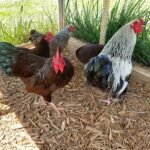
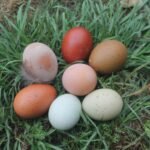
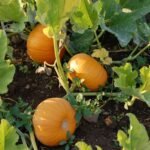
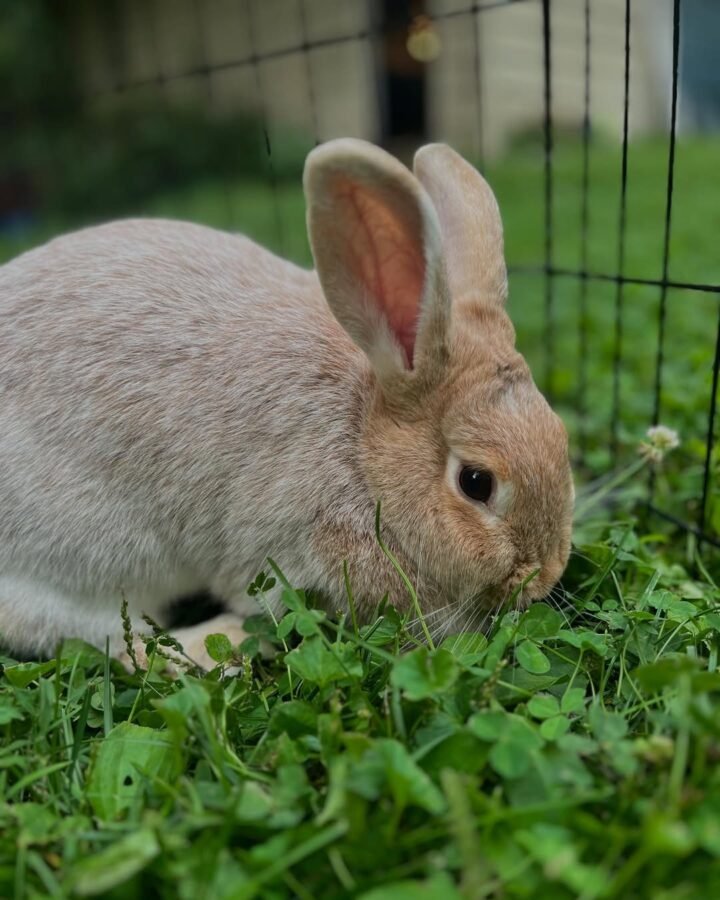
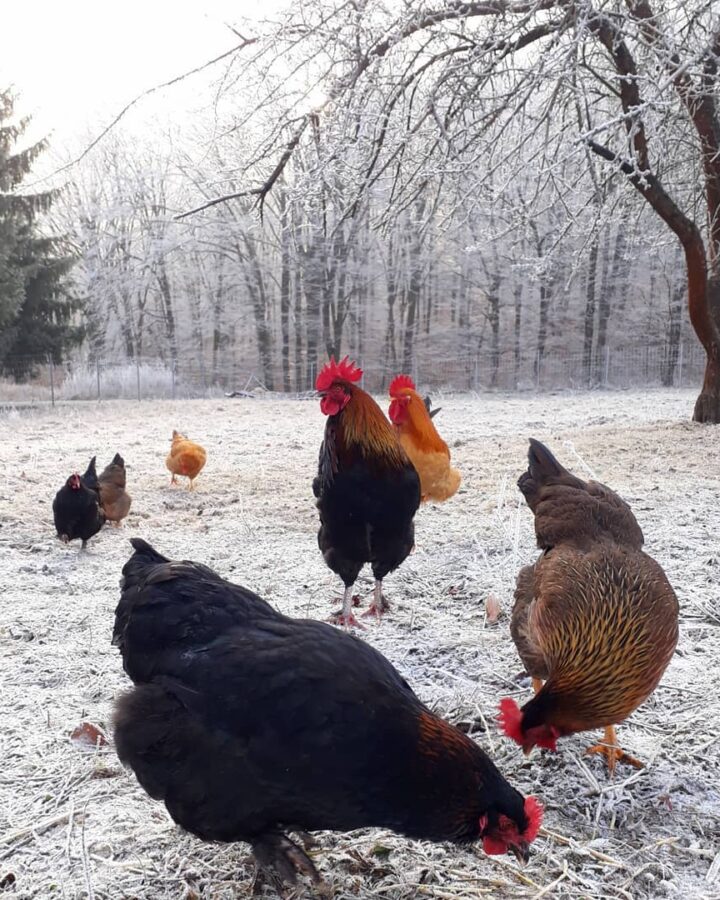
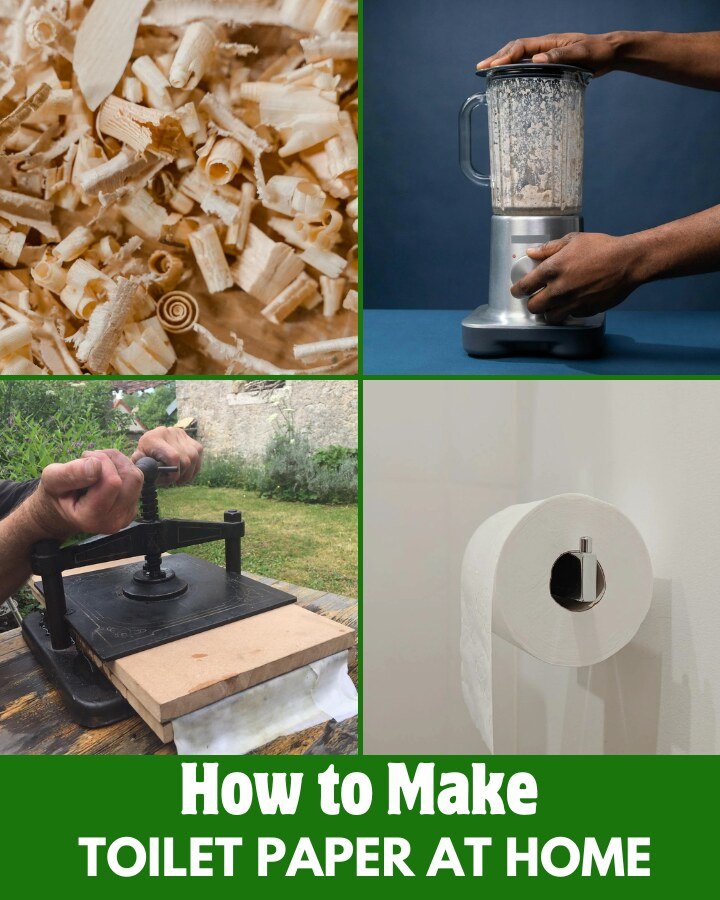
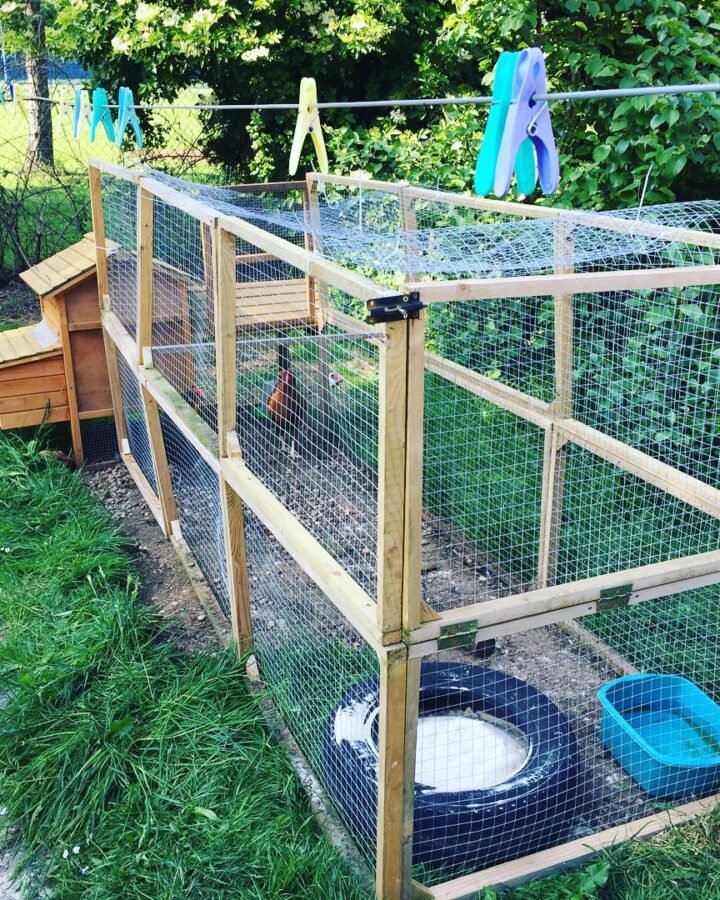
Leave a Reply